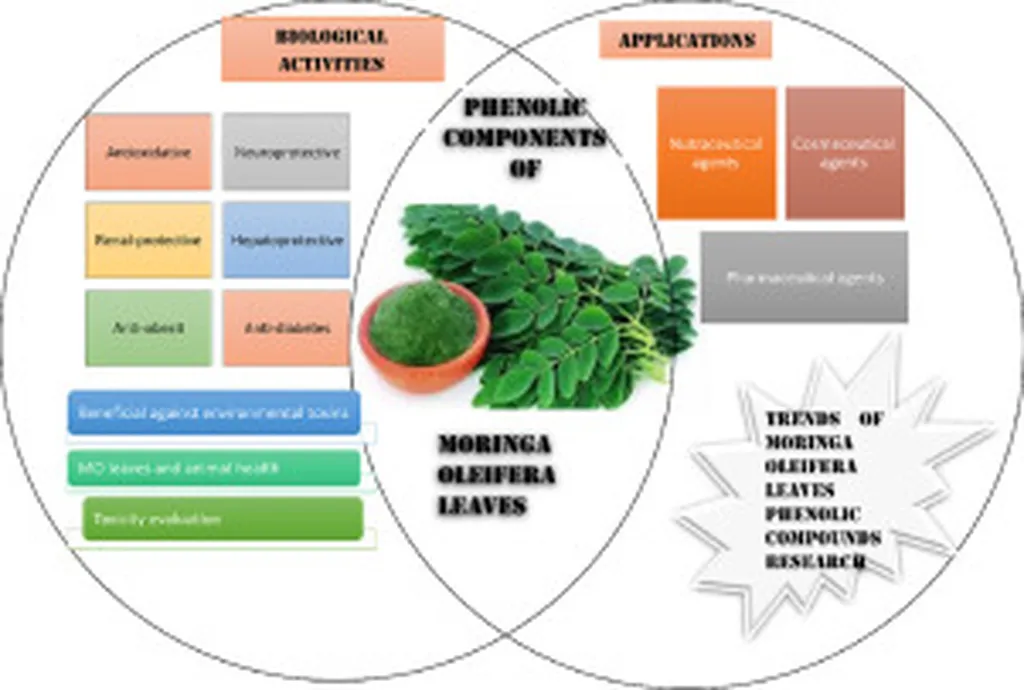In the heart of China, researchers at Yunnan Agricultural University are unlocking the secrets of a humble plant that could revolutionize the food, medicine, and agriculture industries. Moringa oleifera Lam., a plant native to South Asia, has been gaining traction as a new food resource, and for good reason. According to a recent study published in the journal *Food & Medicine Homology* (translated as “Food and Medicine Compatibility”), this plant is a powerhouse of bioactive compounds known as isothiocyanates, which have been shown to have a wide range of health benefits.
Isothiocyanates are secondary metabolites primarily found in cruciferous plants, but they have recently been discovered in Moringa oleifera Lam. as well. These compounds are known for their distinct flavors in food and diverse biological activities, including anti-tumor, anti-diabetic, neuroprotective, antibacterial, anti-inflammatory, and antioxidant properties. “The potential of these compounds is enormous,” says lead author Zi-Yu Guo, a researcher at the College of Food Science and Technology at Yunnan Agricultural University. “They have the potential to transform the way we approach food, medicine, and even agriculture.”
The study, led by Guo, comprehensively examines the bioactivity, bioavailability, and biosynthetic pathways of isothiocyanates in Moringa oleifera Lam. The researchers found that the plant contains biologically active isothiocyanates such as sulforaphane and 4-(α-L-rhamnopyranosyloxy)-benzyl isothiocyanate (MIC-1). These compounds have been shown to have a wide range of health benefits, making them highly valuable for the food and medicine industries.
However, the natural content of these compounds in Moringa oleifera Lam. is low, and chemical synthesis can have negative environmental impacts. This is where synthetic biology comes in. The study highlights the potential of synthetic biology for the sustainable and efficient production of these valuable compounds. By elucidating the biosynthetic pathways of isothiocyanates in many plants, the researchers hope to promote the heterologous production of isothiocyanates through microbial fermentation.
The implications of this research are far-reaching. “By understanding the functional significance of isothiocyanates, we can support further developments in their utilization in functional foods,” says Guo. “We can also propose strategies for achieving high-yield production of these valuable compounds, offering insights that bridge theoretical knowledge with practical applications in the field.”
The study not only provides a comprehensive understanding of the role of isothiocyanates but also offers strategies for achieving high-yield production of these valuable compounds. This could have significant commercial impacts for the energy sector, as well as the food and medicine industries. As the world grapples with the challenges of climate change and food security, the potential of Moringa oleifera Lam. and its bioactive compounds could not be more timely.
In the words of Guo, “This research is just the beginning. We are excited to see how it will shape the future of the food, medicine, and agriculture industries.” With the potential to transform these industries, the humble Moringa oleifera Lam. plant is truly a powerhouse of possibility.

